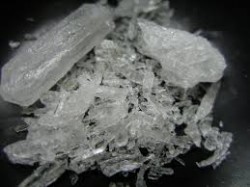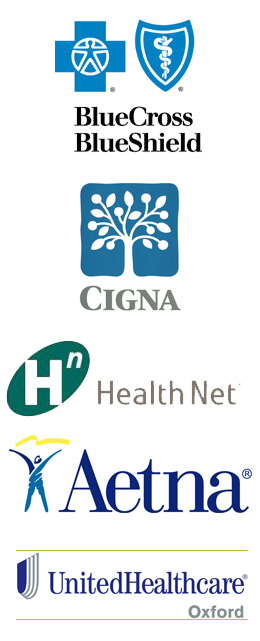Meth Abuse
Meth abuse is one of the fasting growing drug epidemics in the United States. Produced illegally in clandestine labs throughout the country, crystal meth is a powerfully addictive substance that has affected the lives of an estimated 1.5 million people in America. Despite intentions of law enforcement and officials, meth abuse continues to be a growing problem in all areas of the country.
The effects that methamphetamine causes on the brain and to the physical health of the user are unfathomable; many people who abuse meth reportedly age significantly in a very short amount of time. This process is seen in arrest images that are taken of the individuals over the progression of their addiction as they enter in and out of county correctional institutions as a result of their drug abuse.
How Meth is Abused
This drug comes in the form of a powdery substance that resembles sugar or glass shards. In fact, methamphetamine is often called “glass” because of the texture of the drug. It can also be processed down into a liquid form. When the drug is in the solid form, it is generally smoked or snorted to produce powerful euphoria that lasts a few hours or more. Immediate effects will appear within minutes, but these powerful effects dissipate equally as fast. It’s the side effects, agitation and irritability, that tend to last the longest spanning 12 hours or more in some cases.
Methamphetamine can be:
- Injected using a hypodermic needle.
- Smoked through a glass pipe.
- Snorted intranasaly through a straw.
- Consumed orally by mouth.
The effects of meth are quite different based on the method of consumption. If the drug is smoked, the effects are stronger than when the drug is snorted. Likewise, when the drug is injected, effects are almost immediate and they are stronger than any other method of use.
Dangers of Meth Abuse
Unfortunately, methamphetamine abuse can lead to an array of potential consequences for the user. Repeat use is responsible for causing tolerance and physical dependence, according to the National Institute on Drug Abuse. Even a single use of methamphetamine can lead to overdose or fatal consequences. Be wary of the following potential dangers of methamphetamine abuse:
- Violent outbursts
- Heart attack or stroke
- Mood swings
- Paranoia and suicidal ideations
- Psychosis that is similar to schizophrenia
- Hallucinations
- Delusions
- Dental hygiene problems
- Seriously weakened immune system
- Skin infections
- Disease from shared needles
Signs of Meth Abuse
People who regularly abuse meth will often begin to exhibit early characteristics of addiction before they truly are even physically dependent on the drug. For instance, you may see some or all of the following signs of meth abuse in a user:
- Tooth decay
- Anxiety and paranoia
- Delusional thoughts or actions
- Homicidal thoughts
- Distinct changes or disturbances in mood
- Sores on the face, neck, arms, legs or other areas of the body
- Lack of cleanliness or caring for one’s personal appearance
- Distinct changes in sleep patterns
- Erratic behaviors or thought processes
- Arrest or legal trouble for paraphernalia or possession of methamphetamine
- Missed work or school
- Changes in friends
- Changes in attitude
Signs of Meth Addiction
Do you think that someone you know might be abusing meth? According to the North Carolina Department of Justice, meth addiction can cause people to commit crimes in order to get the drug, it often leads to serious financial troubles, and it is responsible for drug-seeking behaviors that generally consume the individual and his or her life. Additional signs of meth addiction include:
- Using meth in dangerous situations
- Using meth when you’ve made commitments to quit
- Using meth at work or while in school
- Going through great lengths to get meth and to abuse the drug
- Using meth even after it has caused serious health defects
- Using meth even after it has caused serious emotional side effects
- Using meth even after it has caused problems in your life
- Being consumed by the desire or cravings to use meth
- Allowing your life to slip out of control due to meth use
- Uncontrollable urges to use meth
- Inability to quit on your own
- Inability to control the amount of meth that you use (using till it’s gone)
Physical Appearance of a Meth Abuser
The physical appearance of someone who abuses meth will often be dismayed. The skin is pale and pasty looking, and the individual will look sickly. Just by looking at someone who is regularly taking methamphetamine, you will likely be able to tell that there’s something wrong. You may even notice the following physical appearance signs of meth abuse:
- Broken teen or rotten teeth; “meth mouth”
- Sores all over the body from picking or scratching; “meth bugs”
- Nosebleeds or sinus infections from snorting meth
- Bad breath from the rotting teeth
Psychological Dangers of Meth Abuse
Consistent use of methamphetamine has been found to cause distinct psychological changes in the user that can resemble schizophrenia or psychosis. In fact, medical professionals often have a difficult time diagnosing psychosis because they must first rule out whether a drug such as crystal meth was the cause of the outbursts or problems for the user. Additional psychological dangers or meth abuse include:
- Unusual agitation and irritability
- Unusually violent outbursts
- Anxiety and paranoia that interfere with life
- Distinct inability to stay focused
- Memory loss
- Mood swings
Withdrawal
Like most substances, regular use of methamphetamine can lead to a serious condition known as withdrawal. This condition occurs when the drug use is abruptly quit or reduced without tapering the drug off gradually. The result is a series of symptoms as the body attempts to regulate and re-adjust to life without the drug. According to the National Library of Medicine, the most severe symptoms of meth withdrawal include:
- Extreme irritability
- Insomnia
- Complete lack of concentration or ability to think straight; “meth fog”
- Chronic cravings to use
- Depression that is very intense and may include suicidal thoughts or ideations
- Psychosis
- Heightened fear and paranoia
Treatment for Meth Abuse & Addiction
If you or someone you love may be suffering from methamphetamine addiction, your best chance for recovery will come with adequate treatment, counseling and supportive care. Various types of meth addiction treatment exist to help you recovery. According to NIDA, the most common means of treatment for meth abuse and addiction include:
- The Matrix Model
- Motivational Rewards
- Cognitive Behavioral Therapy (CBT)
These treatment modalities are often provided in a residential setting but they can also be used in outpatient treatment programs as well. Support will make up a majority of the value that is received in treatment as you continue to build strong, healthy relationships and grow in your recovery.
If you’re looking for help overcoming meth addiction, consider the following treatment options that are available to you:
- Residential treatment – here you will receive around-the-clock treatment and support in a safe, clean environment.
- Outpatient treatment – here you can attend regularly scheduled counseling and therapy sessions and receive continued support.
- Sober living – here you can live with other people who are in recovery while you continue to integrate back into society following addiction treatment.
- Support groups – here you can build strong friendships with others who are in recovery and attempting to reach similar goals of sobriety.
Determining which type of treatment is most suited to your individual situation will depend on a variety of different factors. First, you’ll want to consider the level of treatment that you legitimately need in order to remain abstinent and sober. For some, that level is residential care where there are no drugs and there is around-the-clock monitoring to ensure sobriety; for others, that level is outpatient care where there is support but also balance with family and life at home.
You will also need to consider the following elements of treatment before you decide what’s best for your situation:
- History of past drug use and whether you have tried other methods of treatment before
- How strong your addiction is and whether you CAN manage to stay clean without supervision
- How often you use and how strong withdrawal symptoms are when you try to quit
- Whether you have support through friends and family at home or you need that added support in treatment
- Whether you can afford residential care, whether insurance coverage is available and whether you need around-the-clock care









